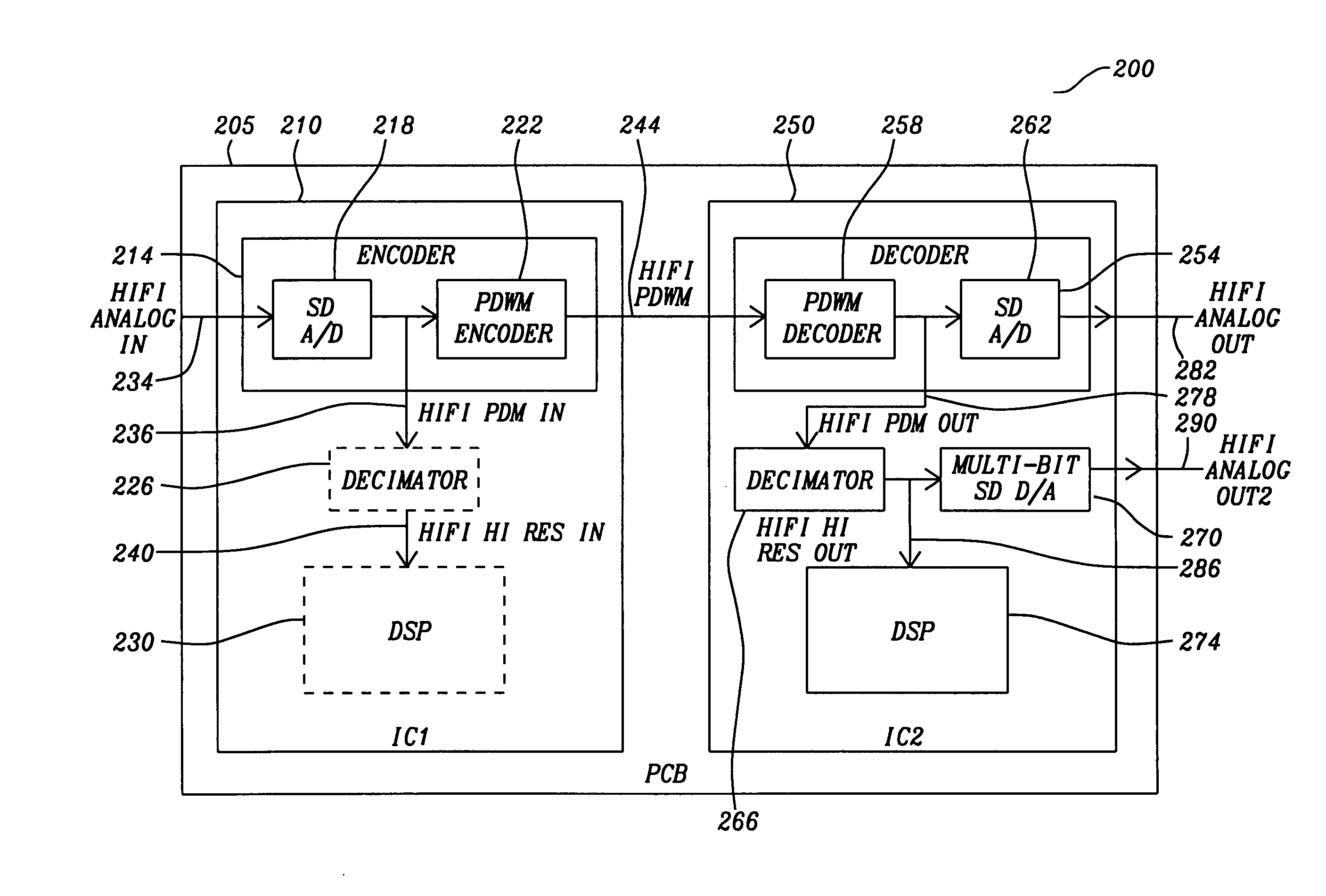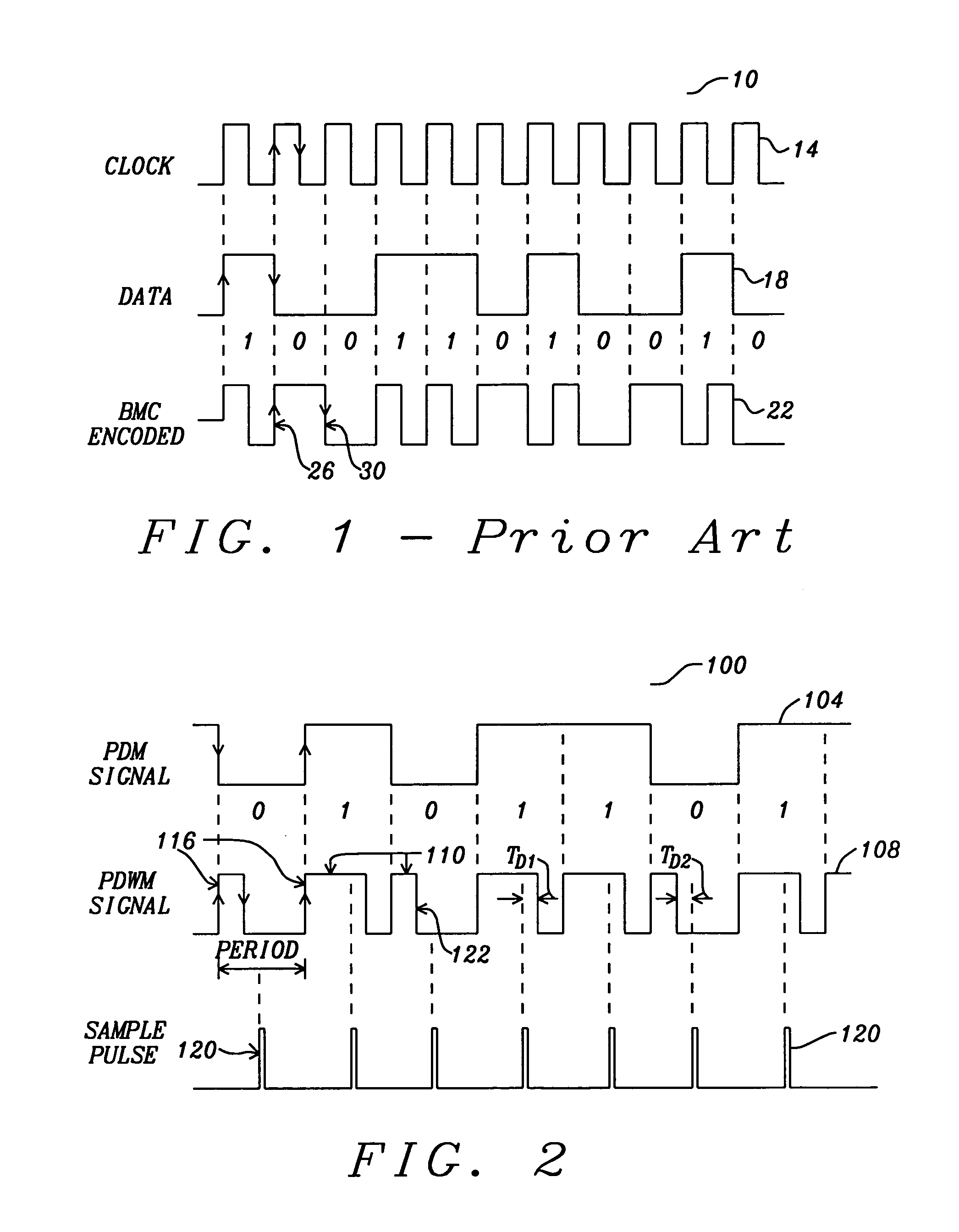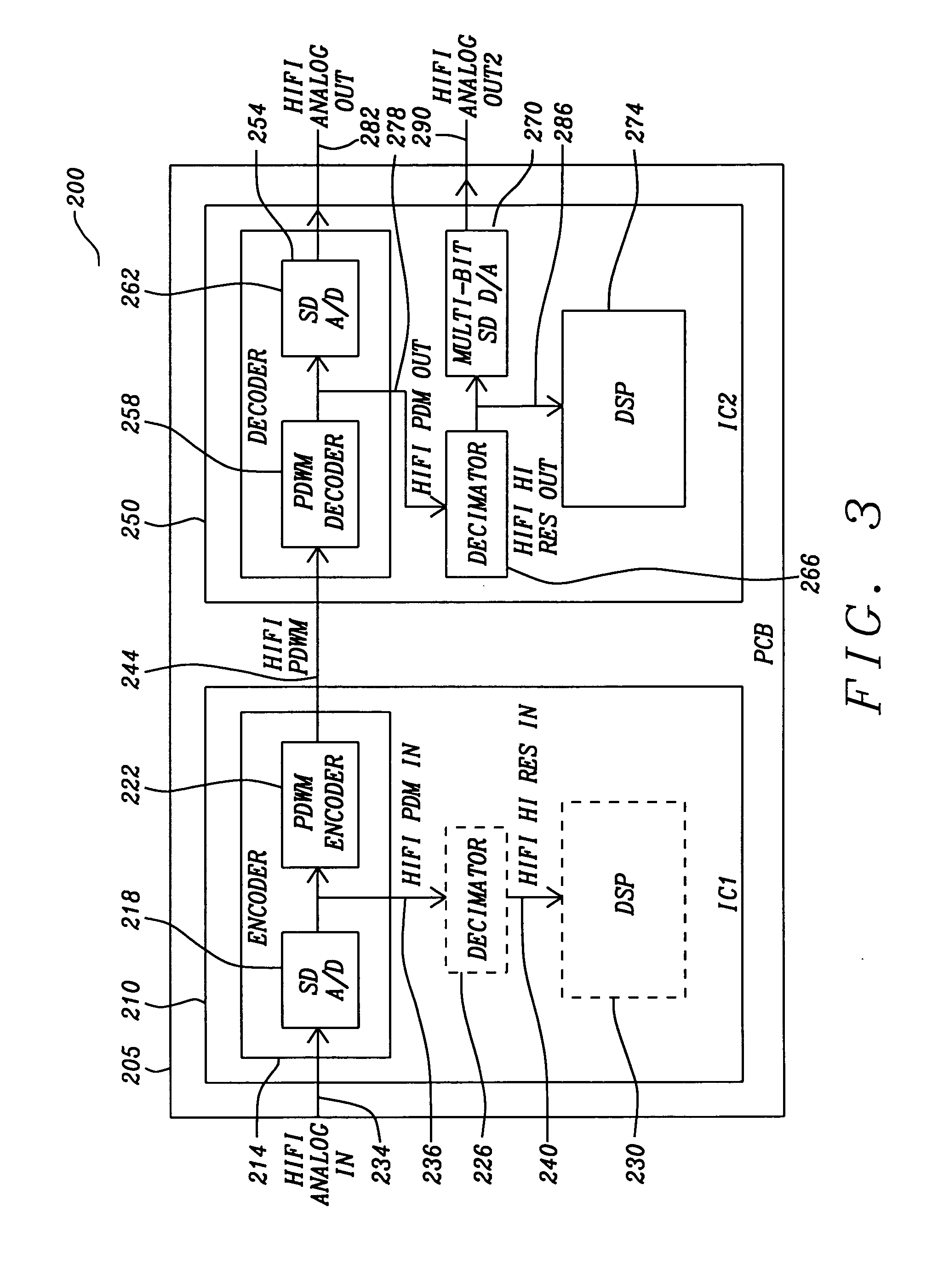Device and method for the transmission and reception of high fidelity audio using a single wire
- Summary
- Abstract
- Description
- Claims
- Application Information
AI Technical Summary
Problems solved by technology
Method used
Image
Examples
Embodiment Construction
[0019]A novel method and device provides improved performance in the transmissions and reception of analog signals and, more particularly, high fidelity audio signal. The method and device provide these improvements by, among other things, encoding an analog signal as a pulse density width modulated signal that is more robust for transmission, reception, and recovery. In an exemplary embodiment of the present invention, a method for encoding an analog signal receives an analog signal, converts the analog signal into a pulse density modulated signal by sigma-delta, analog-to-digital conversion, and encodes the pulse density modulated signal into a pulse density width modulated signal. A plurality of discrete pulse widths corresponds to a plurality of pulse density modulated signal bit levels. A leading edge of each pulse bounds each pulse period.
[0020]In another exemplary embodiment of the present invention, a method for decoding a pulse density modulated signal from a pulse density ...
PUM
 Login to View More
Login to View More Abstract
Description
Claims
Application Information
 Login to View More
Login to View More - R&D
- Intellectual Property
- Life Sciences
- Materials
- Tech Scout
- Unparalleled Data Quality
- Higher Quality Content
- 60% Fewer Hallucinations
Browse by: Latest US Patents, China's latest patents, Technical Efficacy Thesaurus, Application Domain, Technology Topic, Popular Technical Reports.
© 2025 PatSnap. All rights reserved.Legal|Privacy policy|Modern Slavery Act Transparency Statement|Sitemap|About US| Contact US: help@patsnap.com



